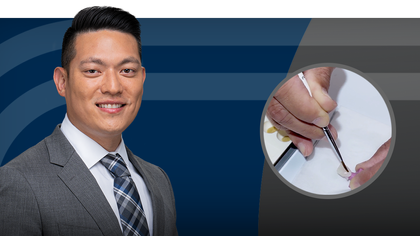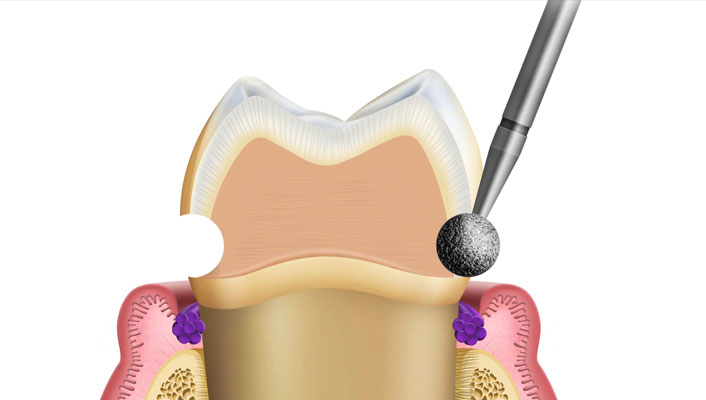- Understand the reverse preparation technique for consistently reliable crown preparations
- Understand the attributes of an acceptable impression and common complicaitons resulting in unacceptable impressions
- Understand recommended dental instruments and materials
Crown & Bridge: Clinical Tips for Success
Course Objectives
2 CE Credits
This course presents the rationale and clinical technique for the reverse preparation technique as well as the two-cord impression technique. Analog and digital impression techniques are also presented.
Summary
Techniques are presented that help take the guesswork out of achieving the best results from your lab and for your patients — whether PFM, all-ceramic or full-cast restorations. The rapid anesthesia technique will make your patients happier and you more productive. Using the reverse preparation and two-cord impression techniques will allow you to demand and expect the best from your lab.
CAUTION: When viewing the techniques, procedures, theories and materials that are presented, you must make your own decisions about specific treatment for patients and exercise personal professional judgment regarding the need for further clinical testing or education and your own clinical expertise before trying to implement new procedures.
Recognition & Approval

Glidewell Education Center
Nationally Approved PACE Provider for FAGD/MAGD credit
Approval does not imply acceptance by any regulatory authority, or AGD endorsement. 3/1/2024 to 2/29/2028.
Provider ID# 216789
References
- Goodacre CJ. Designing tooth preparations for optimal success. Dent Clin North Am. 2004 Apr;48(2):v, 359-85.
- Goodacre CJ, Campagni WV, Aquilino SA. Tooth preparations for complete crowns: an art form based on scientific principles. J Prosthet Dent. 2001 Apr;85(4):363-76.
- Christensen GJ. Ensuring retention of crowns and fixed prostheses. J Am Dent Assoc. 2003 Jul;134(7):993-5.
- Velasquez-Plata D, Andres CJ. The art of crown preparation: a review of principles. J Indiana Dent Assoc. 1996 Fall;75(3):6-11.
- Cloud S, Puri S. Using the double-cord packing technique of tissue retraction for making crown impressions. Dent Today. 1999 Jan;18(1):54-9.
- Hochman MN. Single-tooth anesthesia: pressure-sensing technology provides innovative advancement in the field of dental local anesthesia. Compend Contin Educ Dent. 2007 Apr;28(4):186-8, 190, 192-3.
- Dower JS Jr, Barniv ZM. Periodontal ligament injection: review and recommended technique. Gen Dent. 2004 Nov-Dec;52(6):537-42.
- Quinn CL, Injection techniques to anesthetize the difficult tooth. J Calif Dent Assoc. 1998 Sep;26(9):665-7.
-
 Online CE CourseNext-Level Chairside Esthetics: Customizing Restorations with Stain, Glaze, and Finishing TechniquesIn this course, Dr. Justin Chi demonstrates how to elevate chairside restorations using advanced staining, glazing, and finishing techniques for monolithic restorations.
Online CE CourseNext-Level Chairside Esthetics: Customizing Restorations with Stain, Glaze, and Finishing TechniquesIn this course, Dr. Justin Chi demonstrates how to elevate chairside restorations using advanced staining, glazing, and finishing techniques for monolithic restorations. -
 Online CE CourseEsthetic Veneer Preparations: From No Prep to Full PrepIn this course, Dr. Danielle Brown provides a practical overview of veneer preparation techniques from no-prep, minimal-prep and traditional-prep veneers with step-by-step protocols.
Online CE CourseEsthetic Veneer Preparations: From No Prep to Full PrepIn this course, Dr. Danielle Brown provides a practical overview of veneer preparation techniques from no-prep, minimal-prep and traditional-prep veneers with step-by-step protocols. -
 Online CE CourseBonding and Temporizing Protocols: Tips for VeneersIn this course Dr. Danielle Brown offers practical guidance on veneer temporization and bonding techniques to improve patient comfort and clinical outcomes.
Online CE CourseBonding and Temporizing Protocols: Tips for VeneersIn this course Dr. Danielle Brown offers practical guidance on veneer temporization and bonding techniques to improve patient comfort and clinical outcomes.




